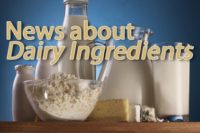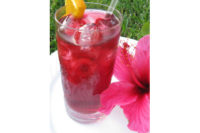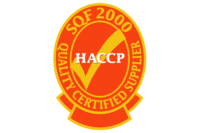The food and beverage industry whizzed past a major milestone in 2011, when for the first time ever the global value of the natural colorants market exceeded that of its synthetic counterparts. According to a 2013 report from Mintel and Leatherhead Food Research, natural colors raked in an estimated $600 million in 2011 — an increase of almost 29% from 2007. Compare that to a 4% increase for artificial colors (to about $570 million) over the same period.
The numbers add yet another brick to the mounting wall of evidence that natural colorants — or, more accurately, colorants exempt from Food and Drug Administration certification for use in foods, drugs and cosmetics — are, in fact, the industry’s “new normal.” Mintel and Leatherhead pegged the use of naturals versus synthetics in new food and beverage launches at 2 to 1 globally and foresee the natural tilt continuing, especially in premium products and those geared toward children.
Yet even as natural colorants have overtaken synthetics, they’ve done so while lacking a considerable chunk of the color spectrum within their ranks. To wit, the food and beverage industry for years had few, if any, FDA-approved, naturally derived and reliably stable color options in the green-blue-purple range.
All that changed earlier this year when the FDA approved a color additive petition submitted by GNT USA Inc., Tarrytown, N.Y., and in so doing expanded the allowable use of spirulina extract as a natural blue colorant to applications well beyond candy and chewing gum where it had already been permitted. Once the ruling went into effect on May 13, spirulina extract became fair game in everything from frostings, ice cream and frozen desserts to dessert coatings and toppings, beverage mixes and powders, yogurts, custards, puddings, cottage cheese, gelatins and other foods.
Industry insiders have called the move “revolutionary.”
As Jim Hamernik, director, research and development, Flavorchem Corp., Downers Grove, Ill., said, “It provides that one missing piece in the natural-color arsenal that was missing for so long.”
And it epitomizes other changes sweeping the color sector as enlightened regulations, advancing technologies and consumer interest all combine to make the natural arena a brighter place to be.
The colorant from the blue lagoon
Spirulina may be new to U.S. manufacturers’ color palette, but it’s hardly new to mankind. In fact, as a species of blue-green marine and freshwater filamentous cyanobacteria (read: algae) known taxonomically as Arthrospira platensis, its “use as a food source is well documented throughout history,” said Jeannette O’Brien, vice president at GNT.
Spirulina’s value as a nutriment comes from its concentrated protein, vitamin and mineral content, which helps explain why it’s a perennial in nutritional bar and supplement formulations. But its value as a food coloring comes from the chlorophyll and phycobilin pigments that spirulina uses to absorb sunlight during photosynthesis, said Jody Renner-Nantz, senior application scientist, DDW, Louisville, Ky. “The phycobilins found in spirulina are phycocyanins, which are blue, and together with the chlorophyll, which is green, give spirulina in raw form its characteristic blue-green color,” she said.
By extracting and concentrating these pigments from the dried spirulina biomass, processors produce the “natural” colorant that FDA just approved and that European food manufacturers have been using for some time.
Changing the palette
“FDA’s approval means that spirulina will now have even more visibility as a natural blue color” here in the United States, said Byron D. Madkins of Chr. Hansen, Milwaukee. Madkins is the senior director, product development and applications, and regional business director in the company’s natural colors division.
Prior to its approval, “there really were no other naturally derived color pigments available that could provide a stable blue shade or, for that matter, green shades for foods,” he said.
That meant that to achieve such hues in the past, manufacturers’ best options were the two FDA-approved synthetic blue dyes, FD&C Blue No. 1 (Brilliant Blue FCF) and FD&C Blue No. 2 (Indigotine). Both gave blues of varying shades and broad stability. And combined with yellows and reds, they allowed for the creation of appealing greens and purples, too.
But synthetics weren’t, and aren’t, without drawbacks — that whole “synthetic” thing being chief among them. As petroleum byproducts, synthetics “are not very consumer friendly,” said Kelly Newsome, corporate communications at GNT. “Since many dairy products are positioned with health and wellness in mind, having natural color options that cover the entire spectrum is a natural fit and a great resource for product developers.”
Spirulina also significantly expands the shades we can achieve “naturally.” As Renner-Nantz said, “Spirulina may possibly substitute for FD&C Blue No. 1 to ‘whiten’ cottage cheese.” And because blue is a “critical building block” for green, black and purple, she added, spirulina now lets us build those colors naturally. “The key is selecting the appropriate second or third color to achieve the desired hue in a blend.”
Also making spirulina a “game changer,” as Hamernik calls it, is its stability. And not only is spirulina stable at higher pH values, but also it displays other in-application behaviors that make it a real catch as far as product developers are concerned.
Sure, it may be significantly more expensive than an FD&C dye, Hamernik said, “and it has some minor flavor and odor challenges and is typically not as strong a dye.” Nevertheless, he said, it is very stable overall and relatively easy to work with.
Spirulina’s strengths
All you have to do is know how, when and where to work with it. As Madkins put it, “Across the natural-color portfolio and within color formulations like emulsions, it’s most important to understand the fundamental attributes of each colorant option and where it can be used to provide the best functionality, stability and shade for a given application. When this is done, natural colors can suitably be used in any given application.”
For example, spirulina is a protein-based colorant, and, as such, “can present some of the challenges one faces when working with any protein-based ingredient,” Madkins said. That means sensitivity to extreme heat during processing — say, during pasteurization — or during extreme high-temperature exposure for any extended time.
Yet according to George Kean, director, R&D applied colors technology, Kalsec, Kalamazoo, Mich., stability data suggest that spirulina in solution buffered above pH 4.0 displays comparable stability to anthocyanin at pH 3.0, while degrading “very quickly” at temperatures higher than 60 C. Even so, Kean noted, “It has been shown capable of making gummies and some candies, suggesting that processing may be modified for compatible use with spirulina.”
As for photo-stability, spirulina bests even some synthetics and appears adequately light stable, as determined by long-term testing, compared with an anthocyanin control, said Kean. More specifically, half-life data show similar loss rates for black carrot colorant and spirulina when the former is in a pH-3.0 solution and latter in a solution buffered above pH 4.0.
Indeed, high-pH stability is a spirulina calling card, and an advantage it enjoys over anthocyanins. But spirulina isn’t completely unfazed by pH. In fact, it undergoes “a notable hue shift, precipitation and degradation in pH conditions below 4.0,” Kean noted, adding that turbidity, precipitation and measurable color loss “occur immediately when pH is adjusted to approximately 3.0 in a citrate solution.”
That being the case, small amounts of moisture appear not to harm spirulina, and it remains fairly clump-free and maintains a uniform particle size in processing, said Kean.
Bringing spirulina to life
Colorant suppliers are sharing their expertise with dairy processors and developing process-friendly ingredient formats. “We’re looking for ways to stabilize spirulina further for use in some of the more challenging processing conditions,” Madkins said.
DDW recently developed a liquid spirulina “that demonstrates greater light stability than the conventional spirulina in the marketplace,” said Renner-Nantz.
She suggests adding liquid spirulina after heat processing to maintain the colorant’s vibrancy in the face of high temperatures, for example post-pasteurization during ice-cream production.
O’Brien said that GNT’s spirulina concentrate “works extremely well in most dairy applications,” though she stresses that “stability challenges are application specific.” Generally, she said, “spirulina can work across all pH systems, but considerations such as time and temperature are often important to look at.”
Looking beyond the wide blue yonder
Spirulina may be today’s big natural-colorant story, but it’s not the only one. Consider the level of sophistication in today’s carotenoid colorants.
“Formulation technologies such as encapsulation and emulsification allow for the stabilization of many exempt colorants, such as turmeric, beta carotene, annatto and paprika, making them suitable for applications where they may not have necessarily been as stable before,” Madkins said. “These formulation technologies, specifically microencapsulation, can allow for natural colors with improved stability to heat, light, pH and oxidation in a wide range of applications.”
Such improvements can also boost the colorants’ tinctorial power, he added, allowing for lower use levels and, thus, lower cost in use.
Renner-Nantz notes that she and her colleagues are “exploiting the limits of solubility” in water-dispersible beta-carotene products that “demonstrate pink hues in milk or ice cream for a strawberry appearance.”
Similarly, Todd Katz of DSM Nutritional Products, Parsippany, N.J., credits the flexibility of beta carotene as a color for permitting a wider range of natural pinks.
“We can achieve pink colors by modifying the shape, size and concentration of the beta-carotene crystal. Through these modifications, we can bring new product forms and shades to the market,” said Katz, who is the regional manager, technical marketing & applications, at DSM North America.
The natural way forward
A growing segment of consumers insist upon naturally colored foods and beverages. One study found that 67% of health-conscious consumers read product labels to review the ingredients that color their foods or beverages. Those label readers deserve significant credit for driving natural color sales to their current level.
With advances in social media and connectivity, “more consumers are able to receive and become aware of the importance of this information and these trends,” said Madkins.
And who wouldn’t want to see a familiar fruit- or vegetable-derived colorant on a favorite product’s ingredient statement? As Newsome pointed out, “Using color ingredients that consumers immediately recognize as natural, such as ‘carrot juice (for color),’ may help manufacturers reach consumers who’re concerned about other types of color ingredients.”
That’s why “natural colors are the future and are consumer driven,” said Hamernik. “They will be the new normal in the next few years.”





